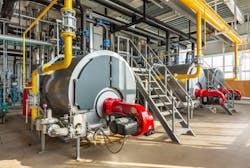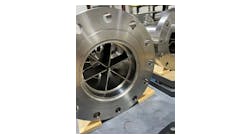Application Corner: Determining the accuracy of refinery boiler steam flowmeters
Legal cases are interesting because they often involve examining evidence to try to determine what occurred years or even decades prior. The key word here is “try” because sometimes there is simply not enough evidence to support a solid determination. Stated differently, the examination process typically involves looking over peoples’ shoulders to locate something that was previously not found.
One such case was that of an oil refinery where the steam flow was measured from each high-pressure, high-temperature boiler located in the powerhouse. The flowmeters were welded in the pipe approximately 50 years prior and had not been examined since. The technicians stopped calibrating the transmitters seven years prior because they contained a hazardous substance. I was contacted because the other party in the legal dispute claimed that the flowmeters were not accurate and could not be trusted.
Approximately six months prior to my involvement, the other party formed a team of two or three engineers to measure or estimate the steam flow to every steam user in the entire refinery in an effort to determine the amount of steam produced by the boilers. While seemingly logical, my initial impression was that that this project was an expensive, time-consuming task with many more unknowns than knowns and almost no chance of success.
The other party allowed me to examine the steam flowmeters and transmitters in the field, plus examine their recorders and totalizers in the control room. Let’s just say that my eyes can wander a bit because (as is common) the boiler feedwater recorders were adjacent to the steam flow recorders. These two measurements are related in that the steam flow is essentially the feedwater flow less the blowdown flow. Although rarely measured, the blowdown flow is a relatively fixed percentage of the feedwater flow. Therefore, the steam flow is also a relatively fixed percentage of the feedwater flow. As expected, the feedwater flowmeters were routinely calibrated and considered accurate.
To make a long story short, my comparison of the relationship between the feedwater and steam flow measurements revealed that one of the steam flowmeters was in error by three or four percent while the other operating flowmeters were in error by less than two percent.
The case was settled shortly after being deposed to present my findings. Unfortunately, a large amount of time and money was wasted taking a different path.
David W. Spitzer
David W Spitzer’s new book Global Climate Change: A Clear Explanation and Pathway to Mitigation (Amazon.com) adds to his over 500 technical articles and 10 books on flow measurement, instrumentation, process control and variable speed drives. David offers consulting services and keynote speeches, writes/edits white papers, presents seminars, and provides expert witness services at Spitzer and Boyes LLC (spitzerandboyes.com or +1.845.623.1830).


